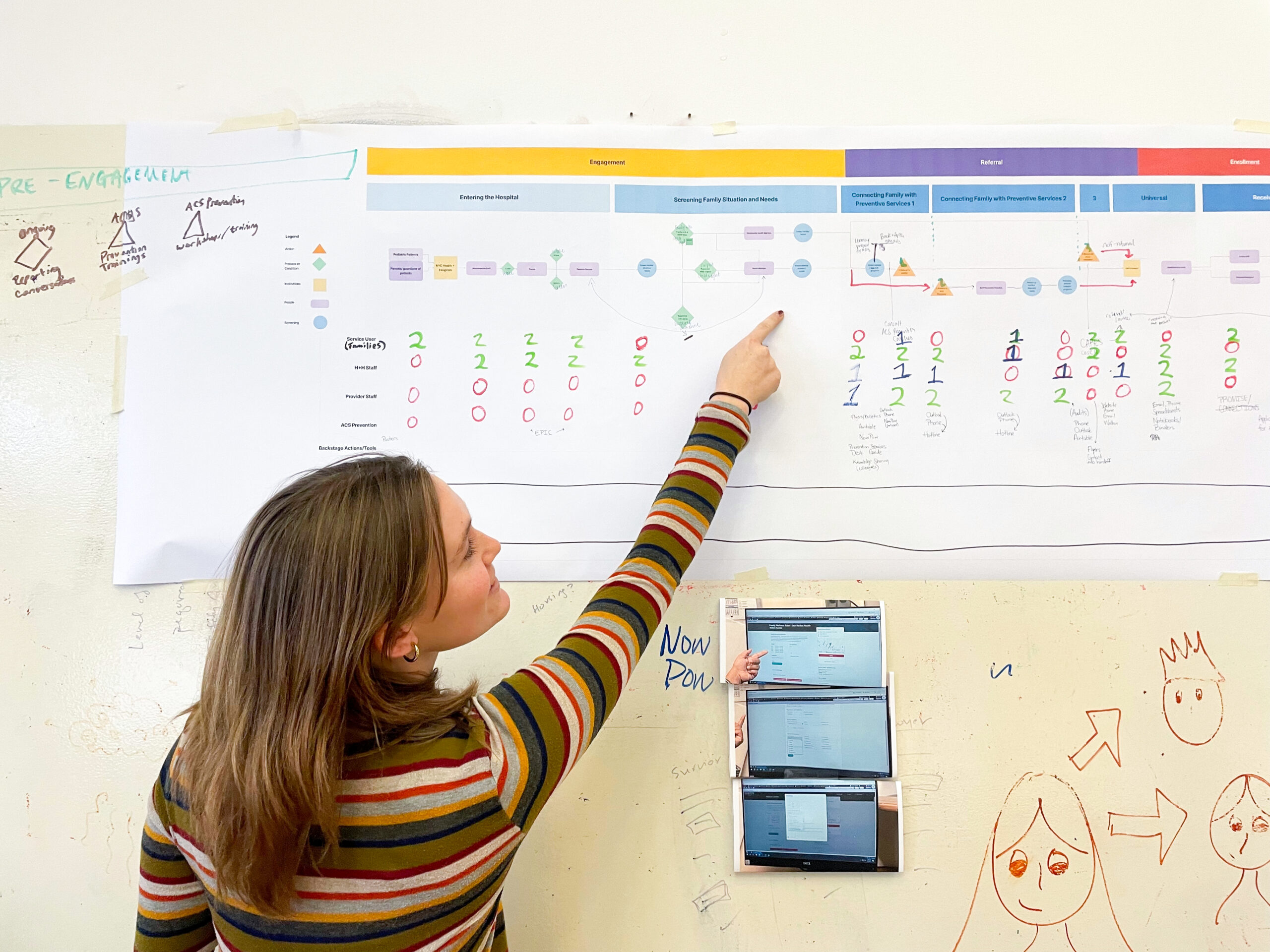

New York City offers free, voluntary services for families struggling with economic scarcity, parenting, mental health concerns, substance misuse, family conflict, and domestic violence. Year after year, families that participate in prevention services continue to have strong results–among families with the greatest level of need, children were far less likely to experience maltreatment or a foster care placement if they participated in prevention services. These services seem to be particularly impactful when families access them, early and voluntarily, through referrals from staff at hospitals, schools, and community-based organizations.
Prevention Pathways is a multi-year project aimed at improving referral pathways to prevention services, with the goal of increasing the number of families receiving community-based services and reducing the number of unnecessary reports to the State’s child abuse hotline.
Building on past initiatives to encourage H+H staff to connect families to prevention services directly, PPL will aim to make the prevention services referral process more accessible, family-friendly, and scalable across the H+H systems.
This project is a partnership between the Public Policy Lab (PPL), the New York City Administration for Children’s Services Division of Prevention Services (ACS Prevention), and NYC Health+Hospitals (H+H), with generous support from Casey Family Programs and Youth and Families Forward.
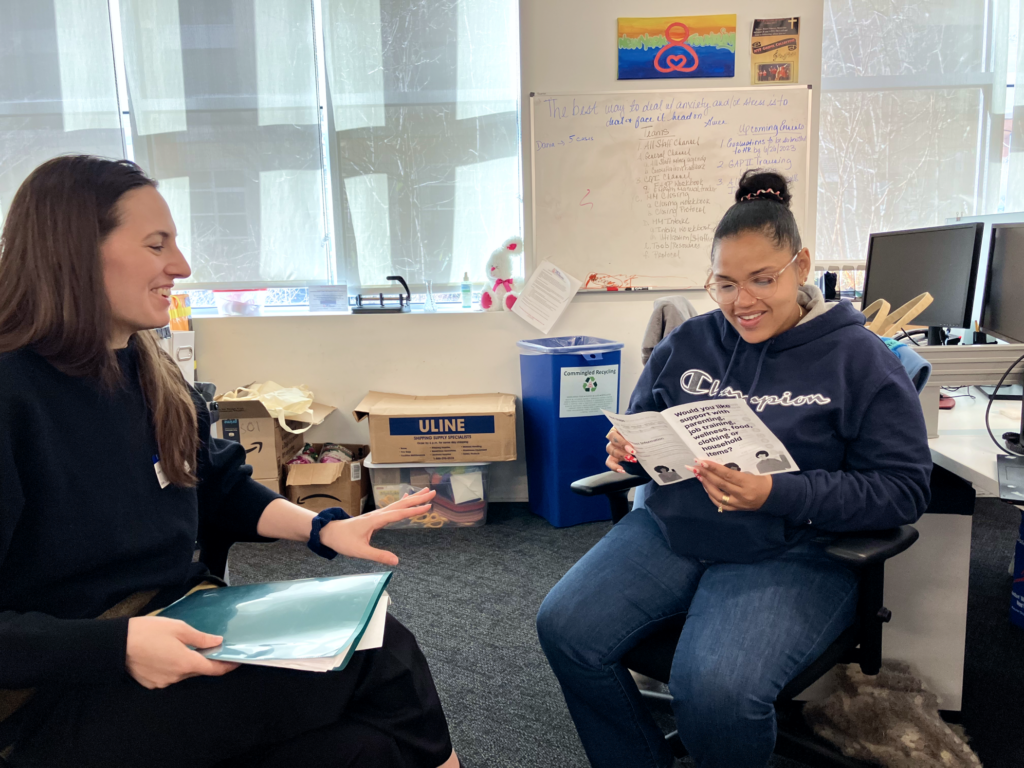
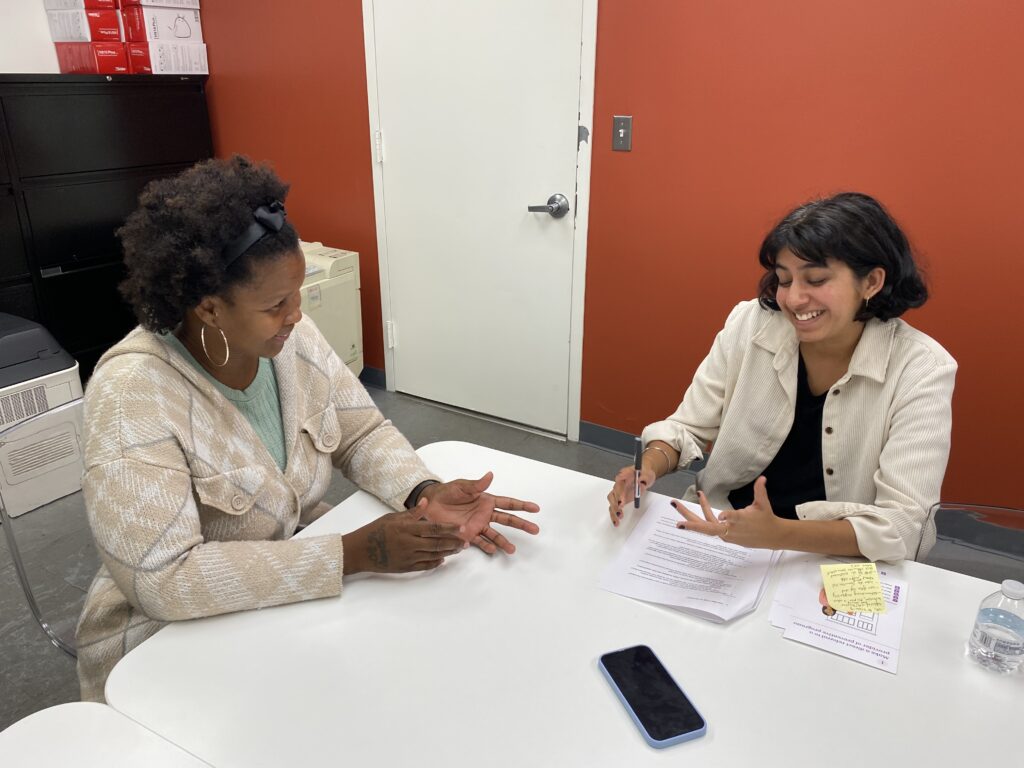
Interviews
Data points
We conducted over forty interviews at hospitals and community-based organizations across New York City, speaking with eleven families and twenty seven frontline staff who support them.
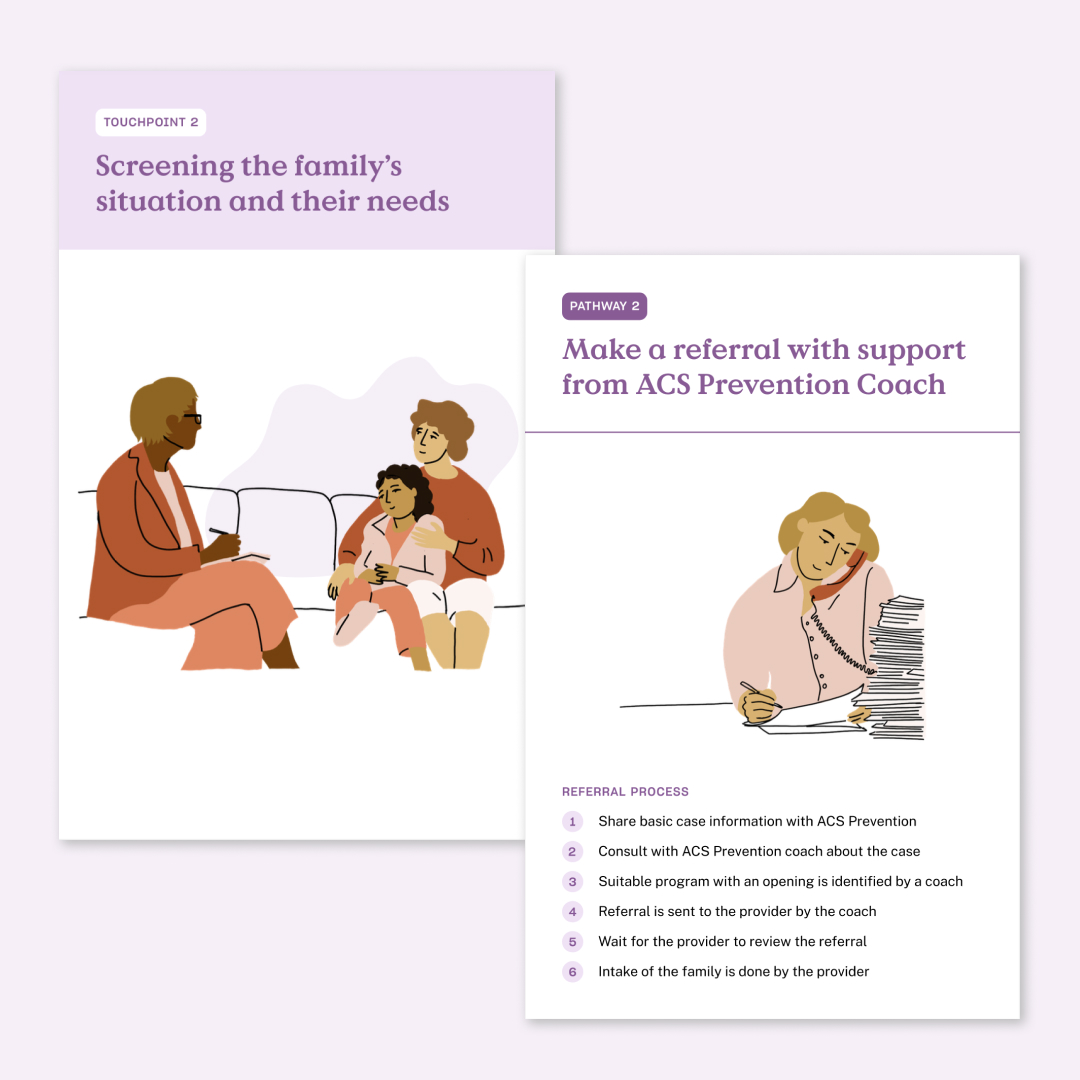
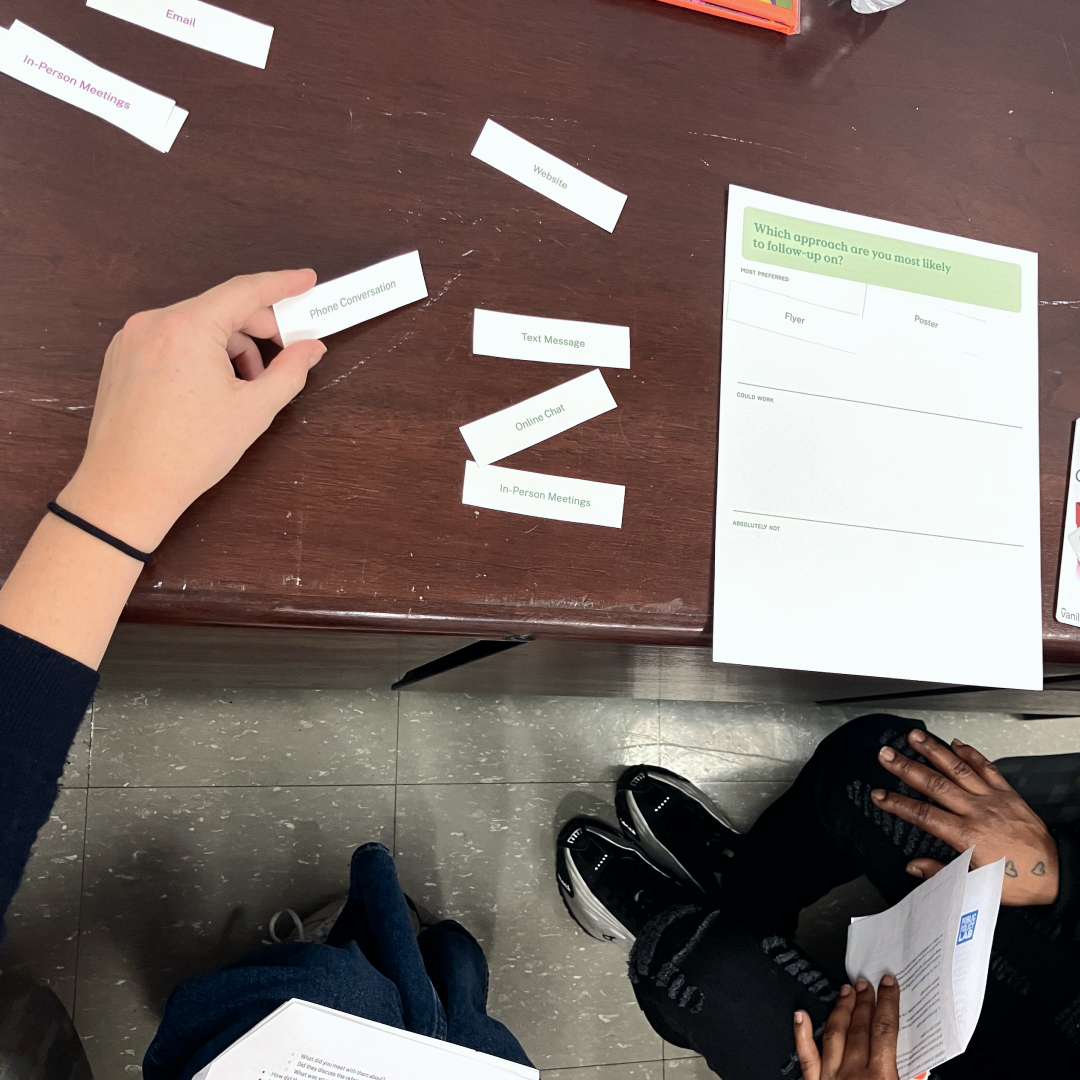
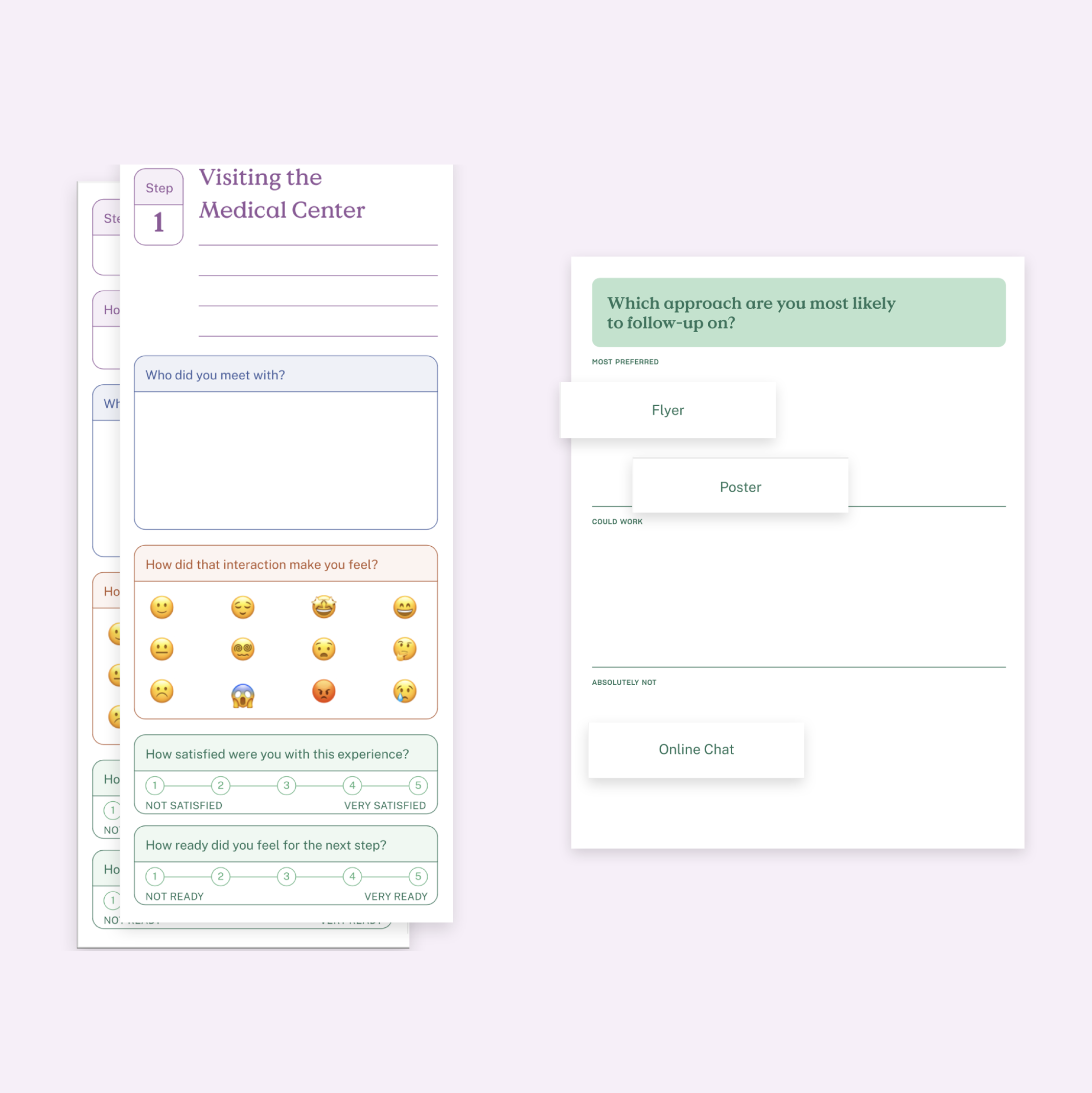
In-Person Research
Through guided exercises with interactive materials, frontline staff mapped out common and preferred referral pathways, while families drew out the information sources and formats they prefer when learning about services.
After hearing from families and staff, and collecting 2,500+ data points, we returned to ACS headquarters to bring these stories directly to leadership. We immersed our partners from ACS and Health + Hospitals in participant stories by playing audio clips and quotes from participants and sharing our takeaways from each phase of the service journey. Our partners engaged with these stories through a series of interactive activities, indicating the details that were new to them, and noting areas they wanted to learn more about.
Some of our takeaways include:
Here are a few highlights from the stories we heard:

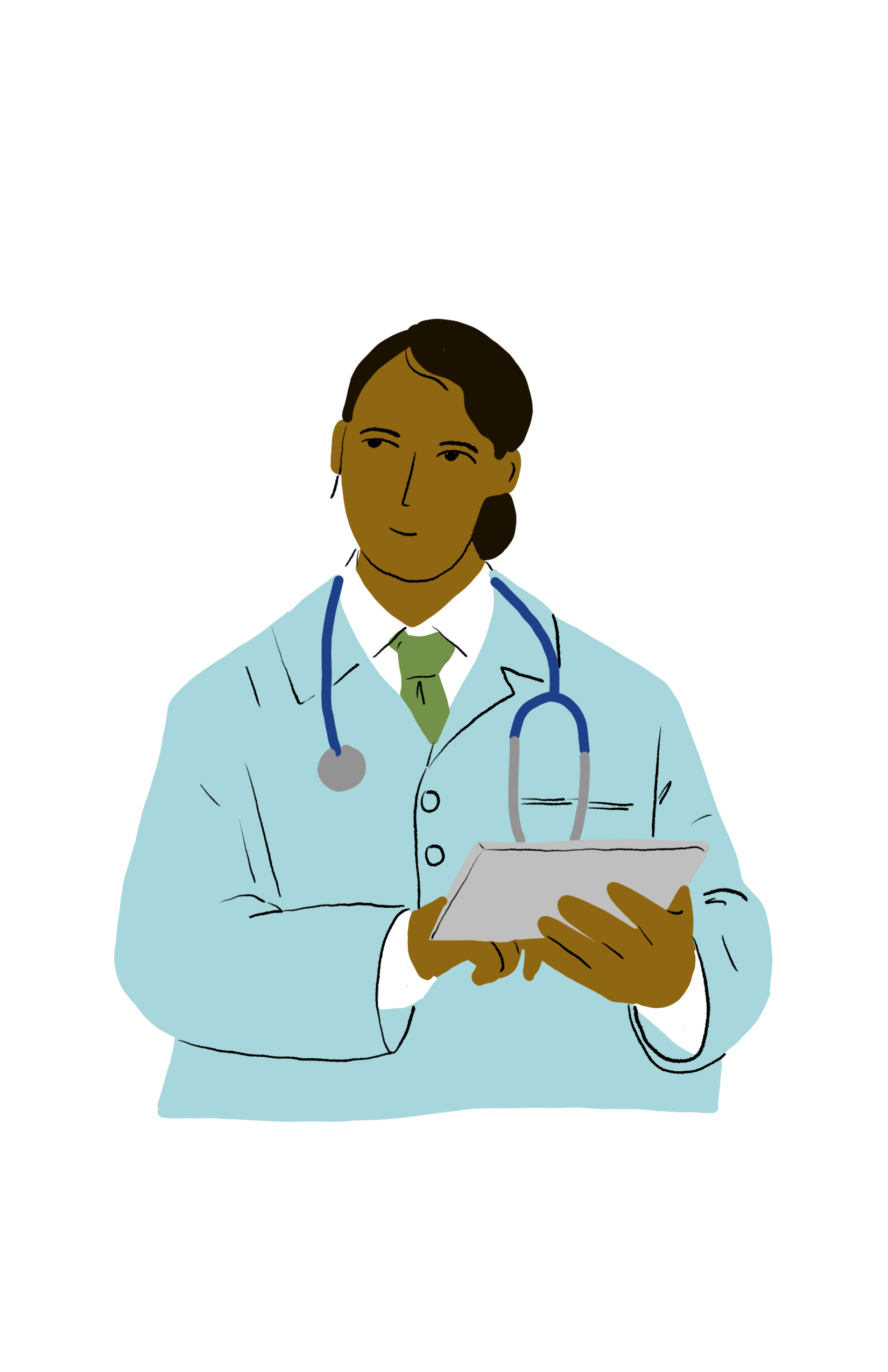
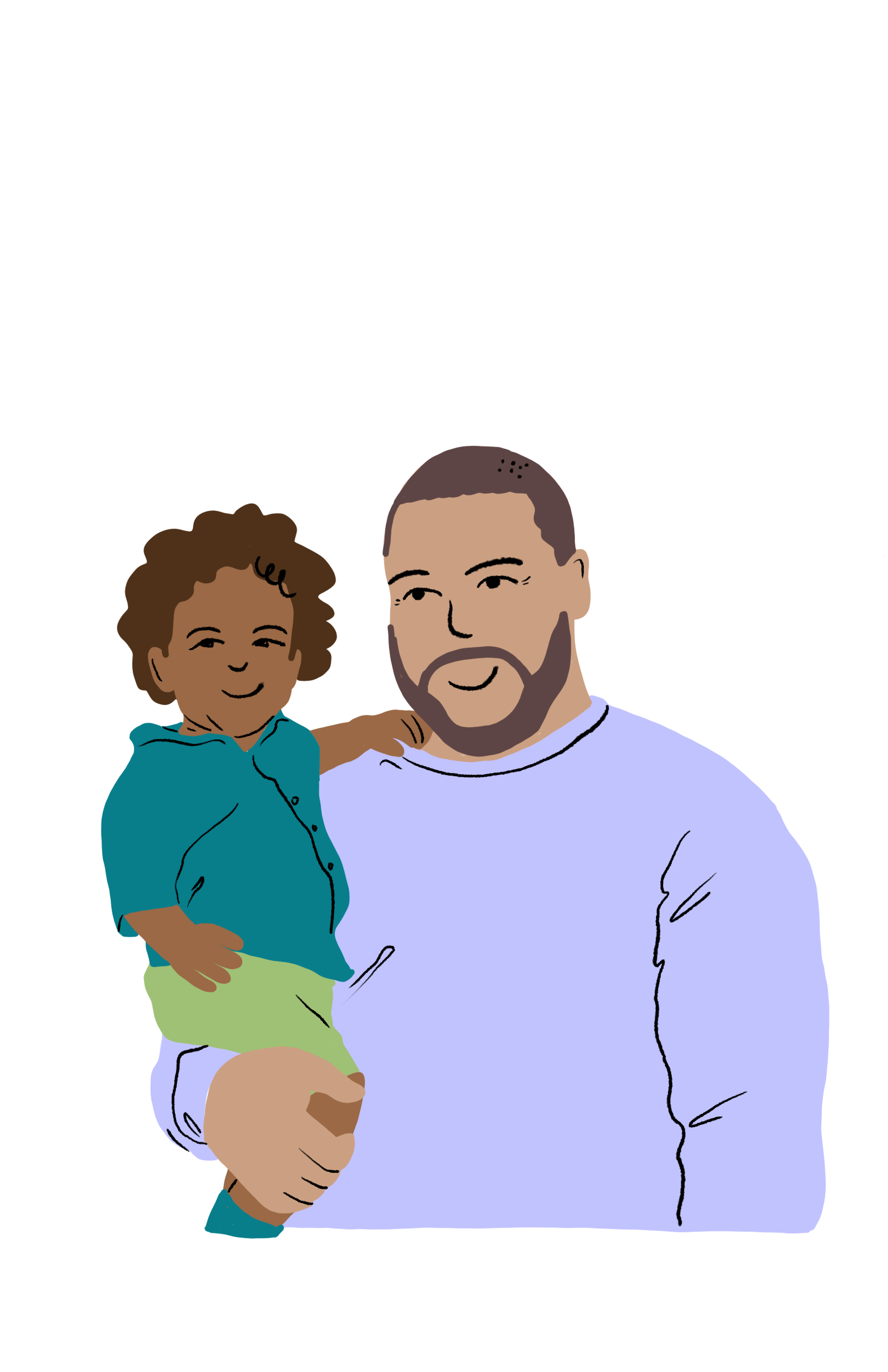


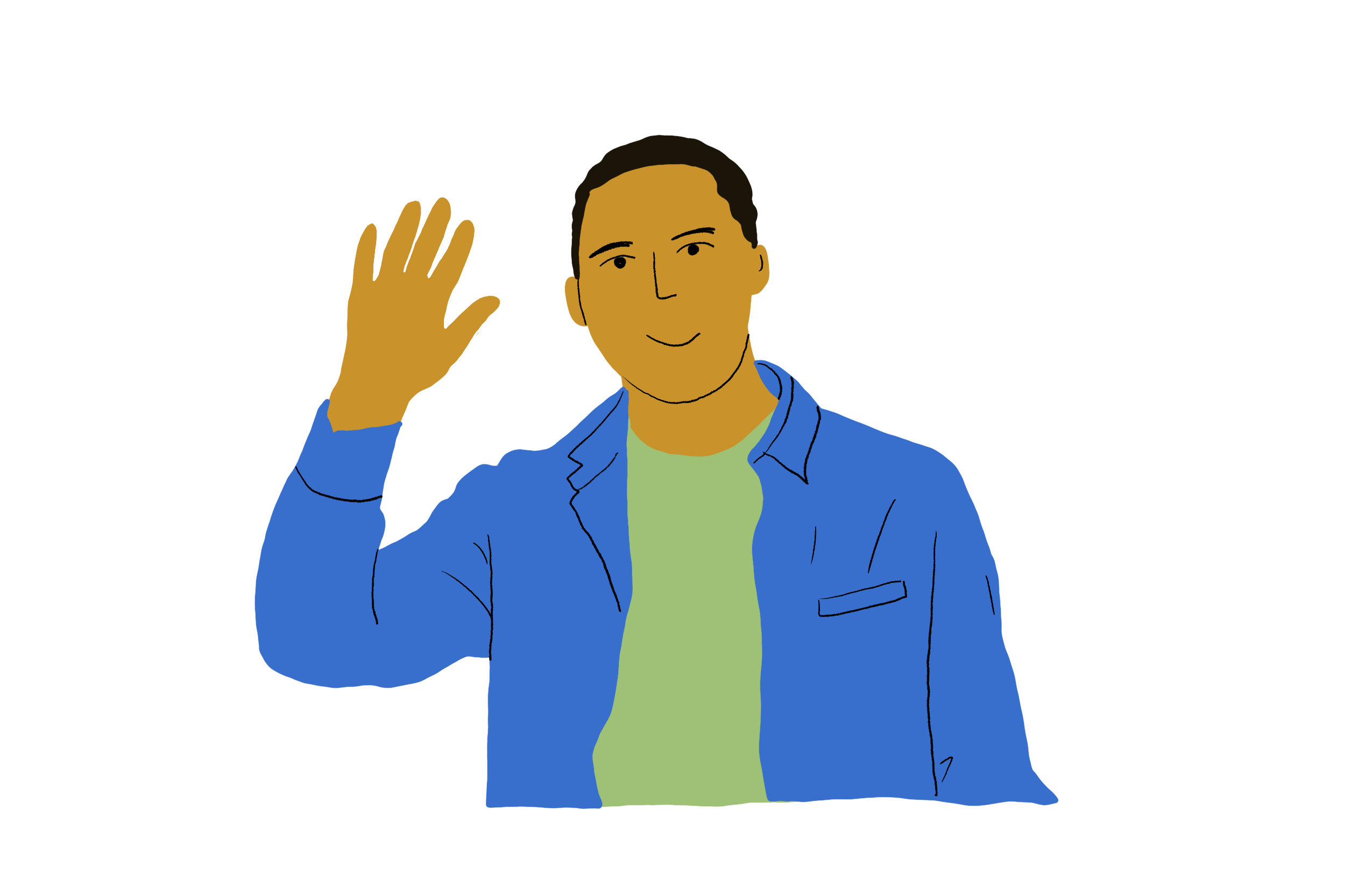
Our synthesis process included many rounds of printing, clustering, and re-organizing to identify an initial set of themes. From there, we performed a variety of matrix activities including plotting our insights to understand commonality (how many stakeholder groups feel this insight) versus intensity (how intensely do stakeholders feel this insight ) and having our partners at ACS and H+H plot the insights based on their curiosity versus how important they felt each issue was.
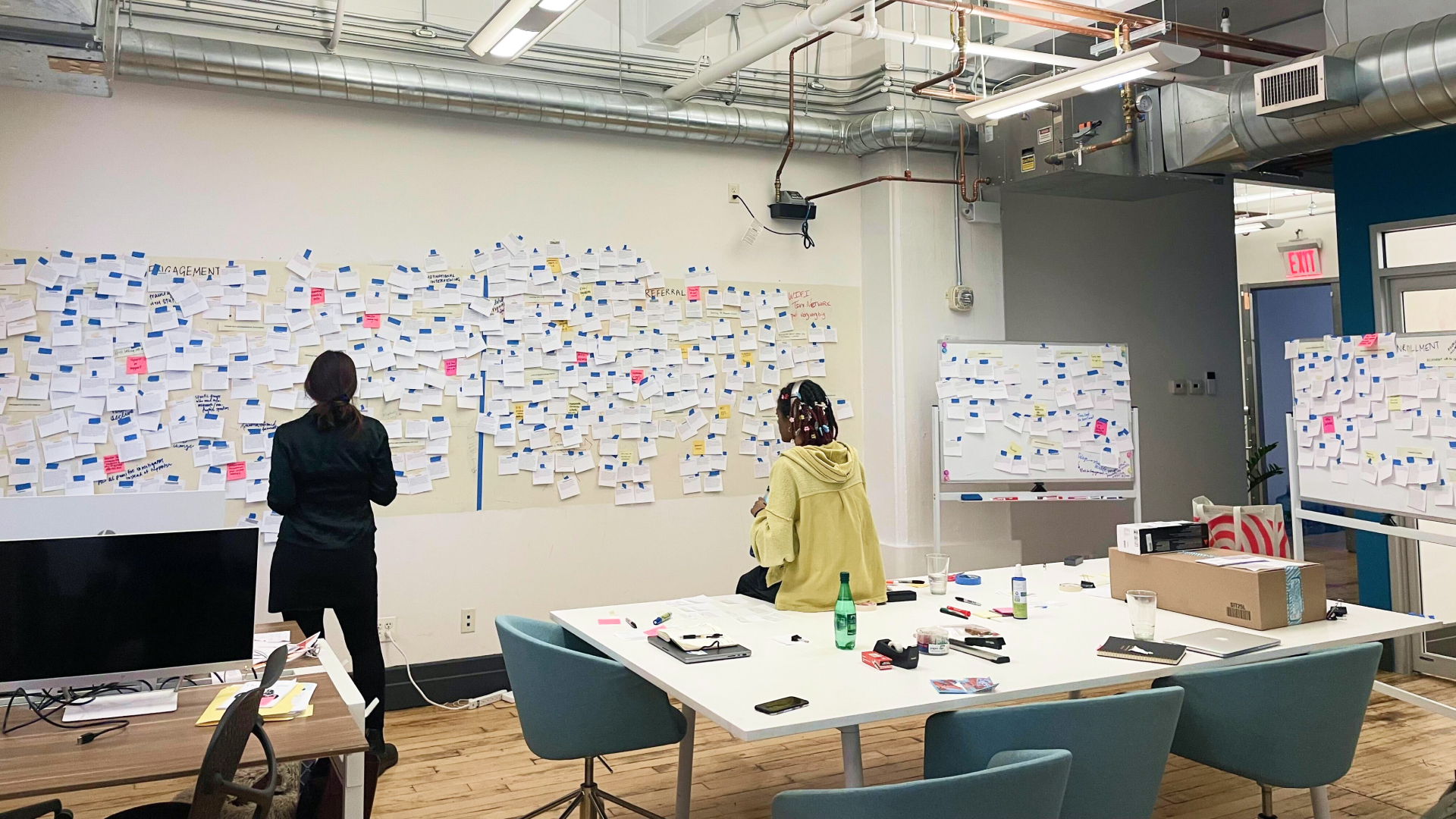
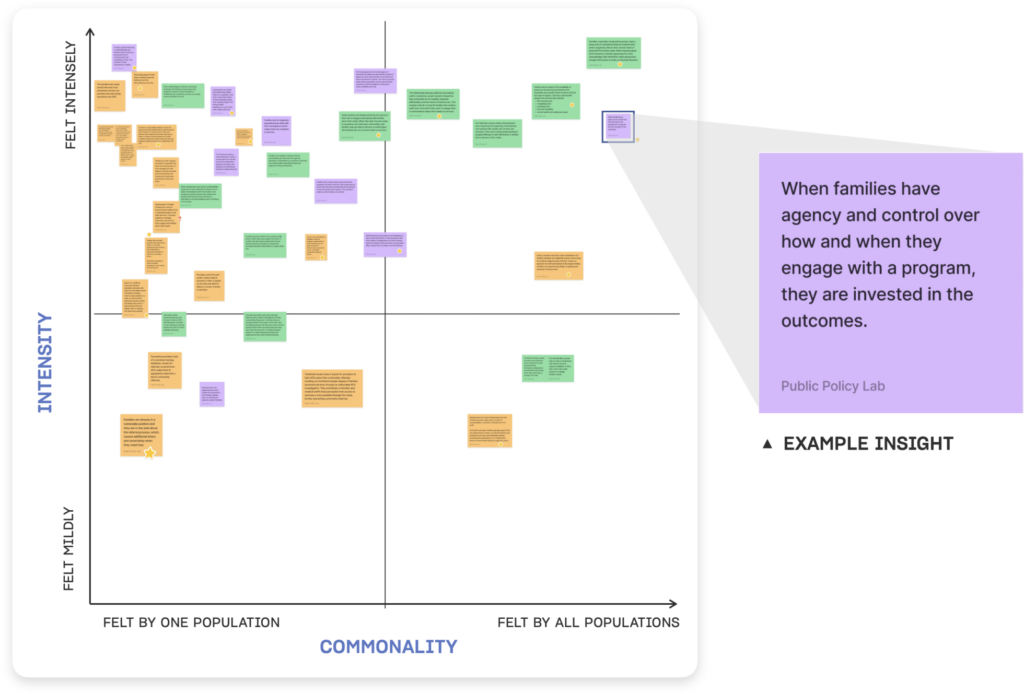
Commonality vs. Intensity Matrix
During synthesis, we plotted our insights on a matrix of commonality (how many stakeholder groups feel this insight) versus intensity (how intensely do stakeholders feel this insight).
After printing and plotting, immersing ourselves deep in the experiences of our participants, we narrowed in on five concept areas ripe for intervention. Through co-design sessions with families, H+H staff, providers, and ACS Prevention, we worked together to hone our design concepts into four prototype areas that are ready to be piloted: Family Support Trainings, Family-Staff Interaction Tools, Referral Pathways.
Family Support Training Tools
The training video, aimed primarily at time-constrained medical staff, gives a brief overview of what Family Support programs are and who is eligible. The Family Support training gives social work staff an in-depth understanding of each program’s offerings, how to identify relevant families, and the step-by-step process to make referrals.
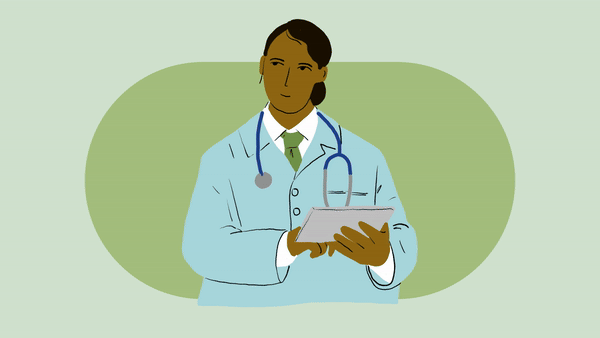
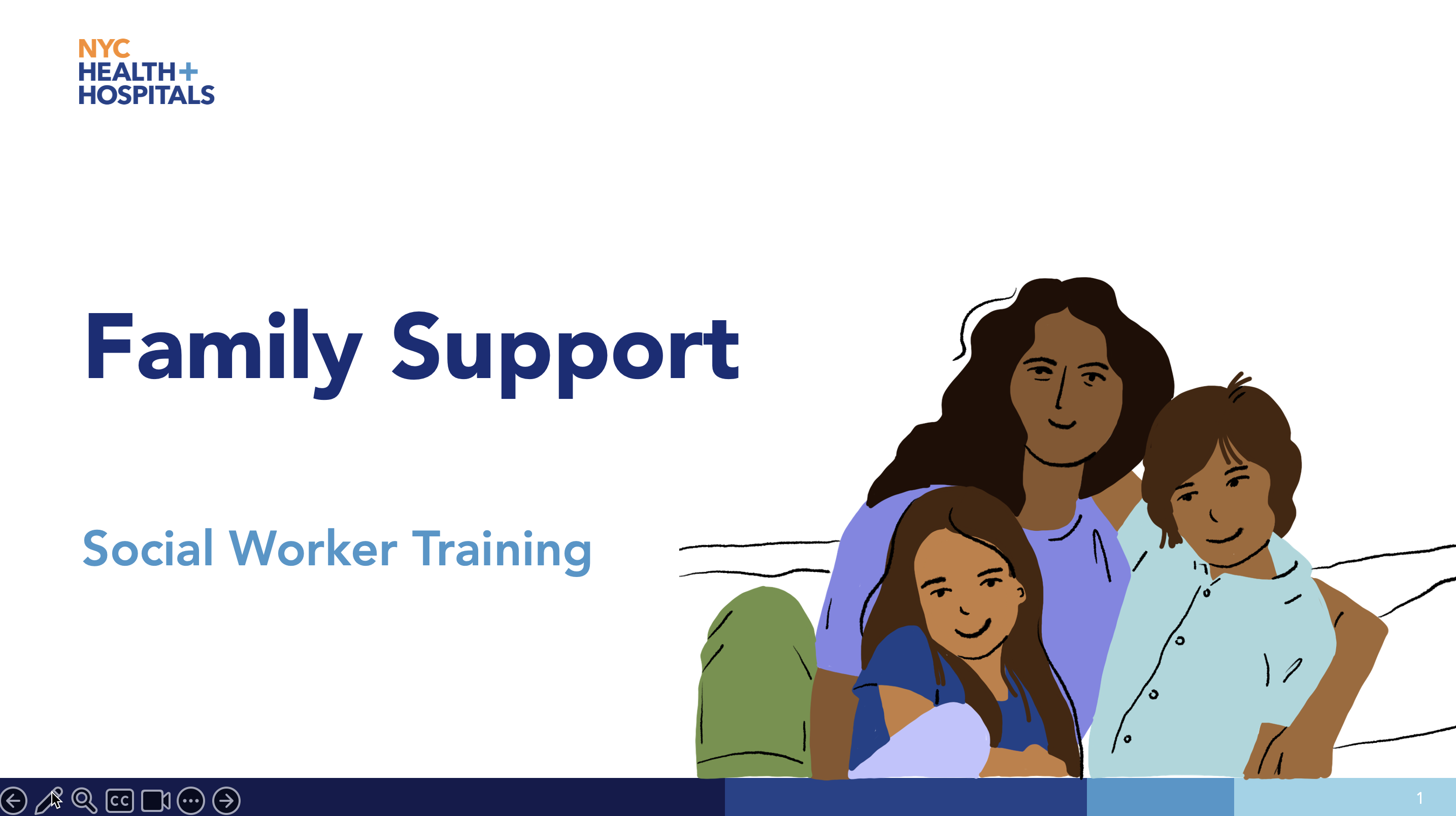
Family-Staff Interaction Tools
The Guide to Family Support (left) is designed for social workers, outlining program models, referral process information, and an online directory of programs. Social workers can use this Guide for their own learning, or with families to provide transparency and get their input on programs.
The Family Support brochure (right) aims to give families a friendly introduction to services, let them know what to expect in the referral process, and provide contact information to follow up for a referral.
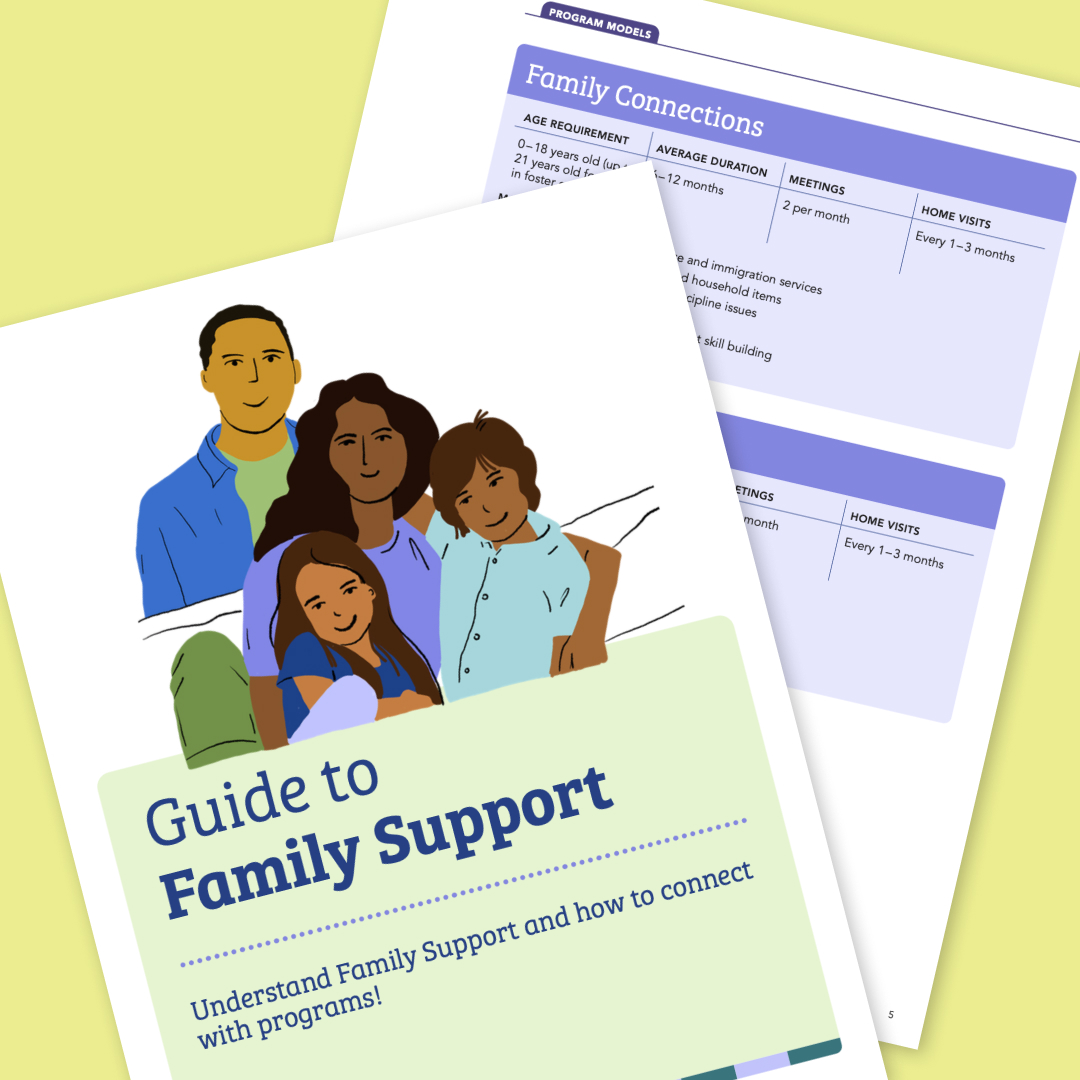
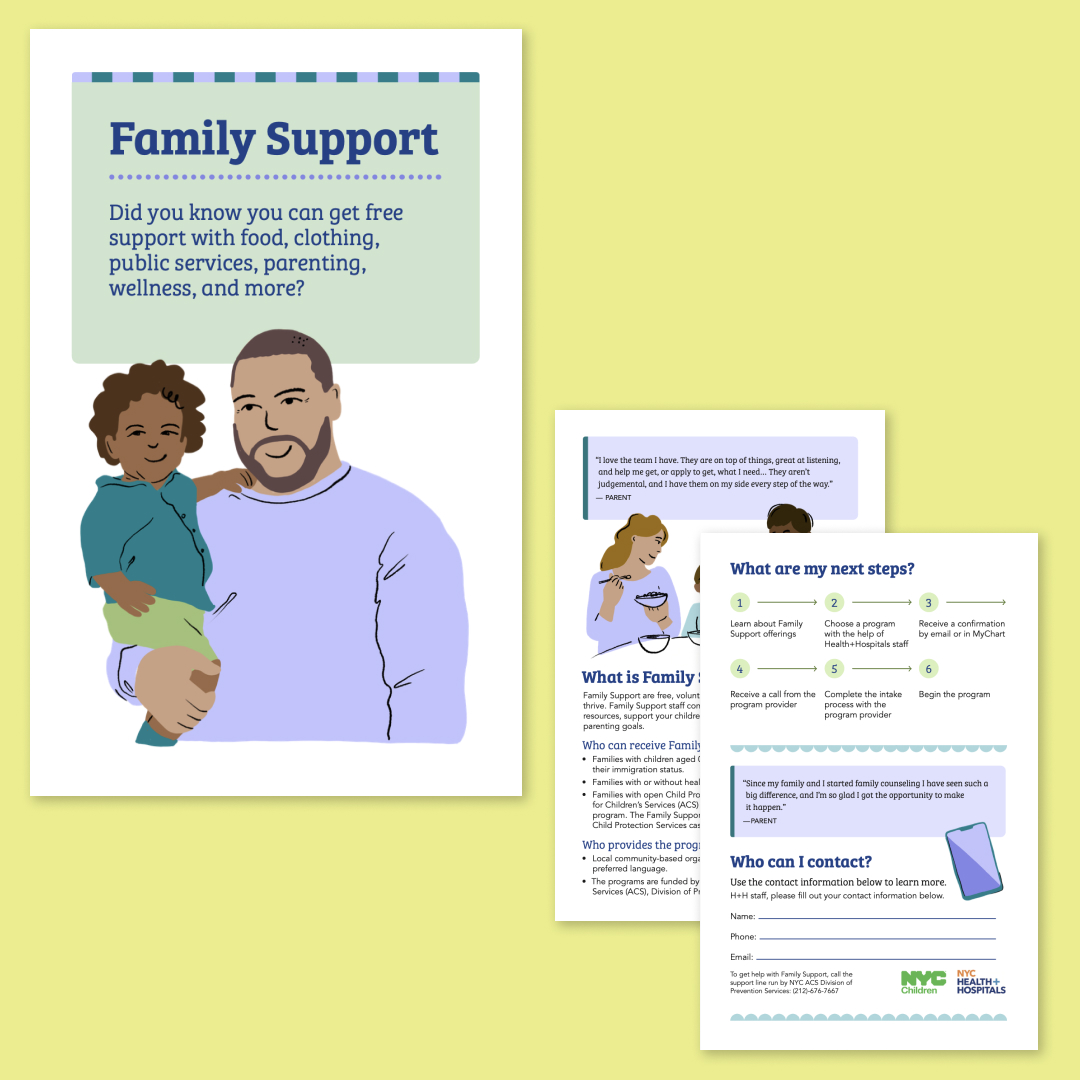
When preparing the tools for launch we led a series of trainings with key service providers to ensure that successive uptake of the tools upon deployment. For the Social Worker training, we implemented a “train-the-trainer” model where we trained a cohort of social workers in charge of child abuse prevention efforts who will then use the tools to train additional social workers at the kickstart of the pilot. For the Referral Pathways tool, we facilitated onboarding sessions for prevention provider CBO staff, teaching them how to effectively manage program listings on findhelp and leverage the tool to increase community referrals.
In addition to the tools that were be piloted, we also worked with families to co-create a job description for a “Prevention Parent Advisor” role at ACS Division of Prevention Services. During co-design sessions, families communicated a need to increase Family Voice in the referral process. The new role we co-created would provide a leadership position for a parent with lived experience of preventive services to advise the Division’s teams. The role aims to increase collaboration between ACS Prevention and families and build the community’s trust in preventive programs. While this is not part of our pilot, ACS is moving forward with its hiring.
In May 2024, we launched a pilot with NYC Health + Hospitals staff and ACS-contracted CBO staff across New York City. We marked the launch of the pilot with a Prevention Pathways launch event at Lincoln Hospital.
The week of the pilot launch, 26 pediatric and OB-GYN social workers across three NYC Health + Hospitals locations were led through a training on Family Support programs using the new Family Support Training Tools. These sessions, led by designated Family Support champions within each facility, included watching the Family Support Training Video, walking through the Family Support Presentation, and meeting local Family Support providers who outlined their services and answered questions. Medical staff also used Family Support Training tools, disseminating the Family Support Training Video and Medical Staff One-Pager amongst their staff to ensure that medical providers across departments participating in the pilot were aware of these services.
Prevention Pathways Pilot Launch
On May 28, we celebrated the pilot launch with an official launch event at Lincoln Hospital, attended by the full Prevention Pathways team: Public Policy Lab staff, ACS staff, and H+H partners.
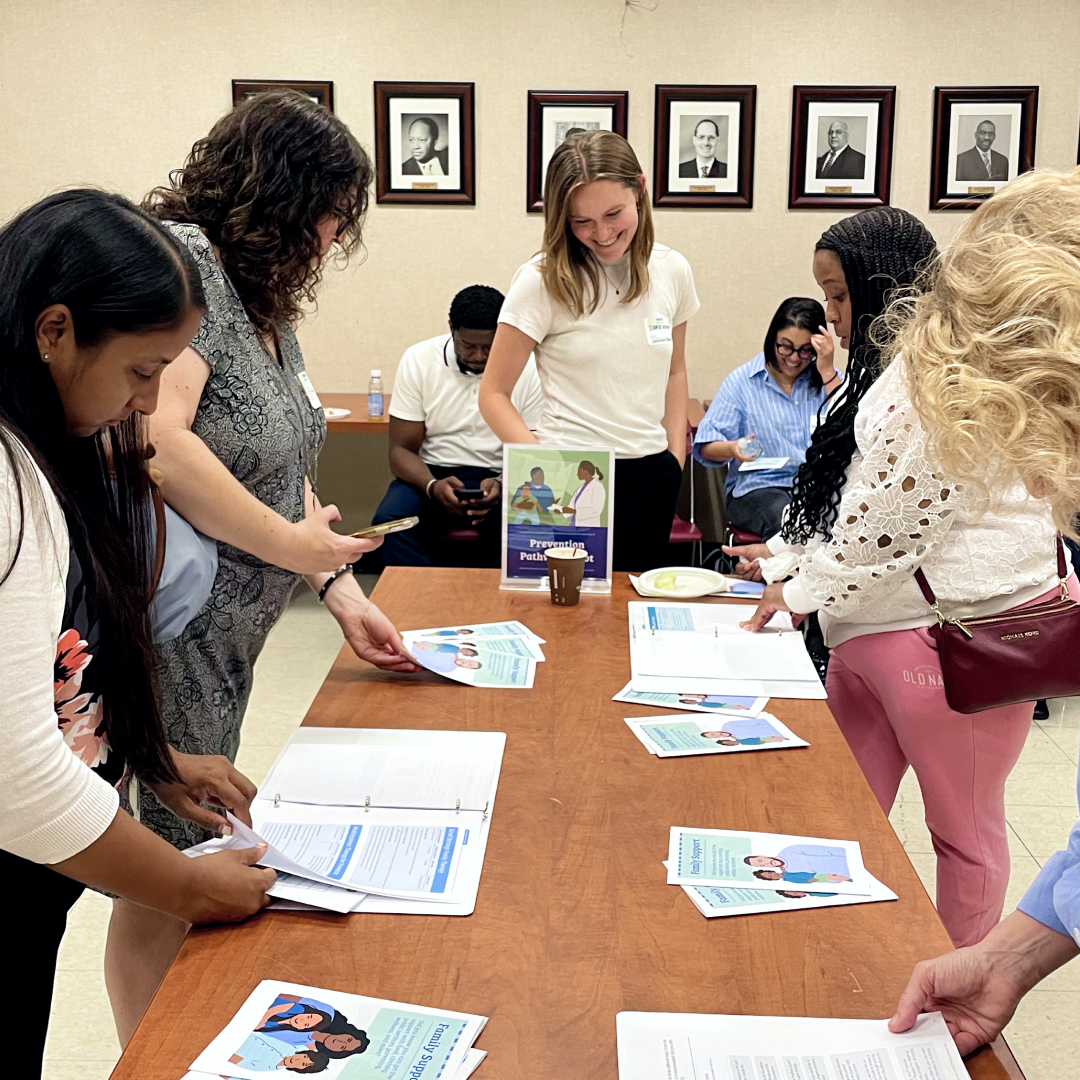
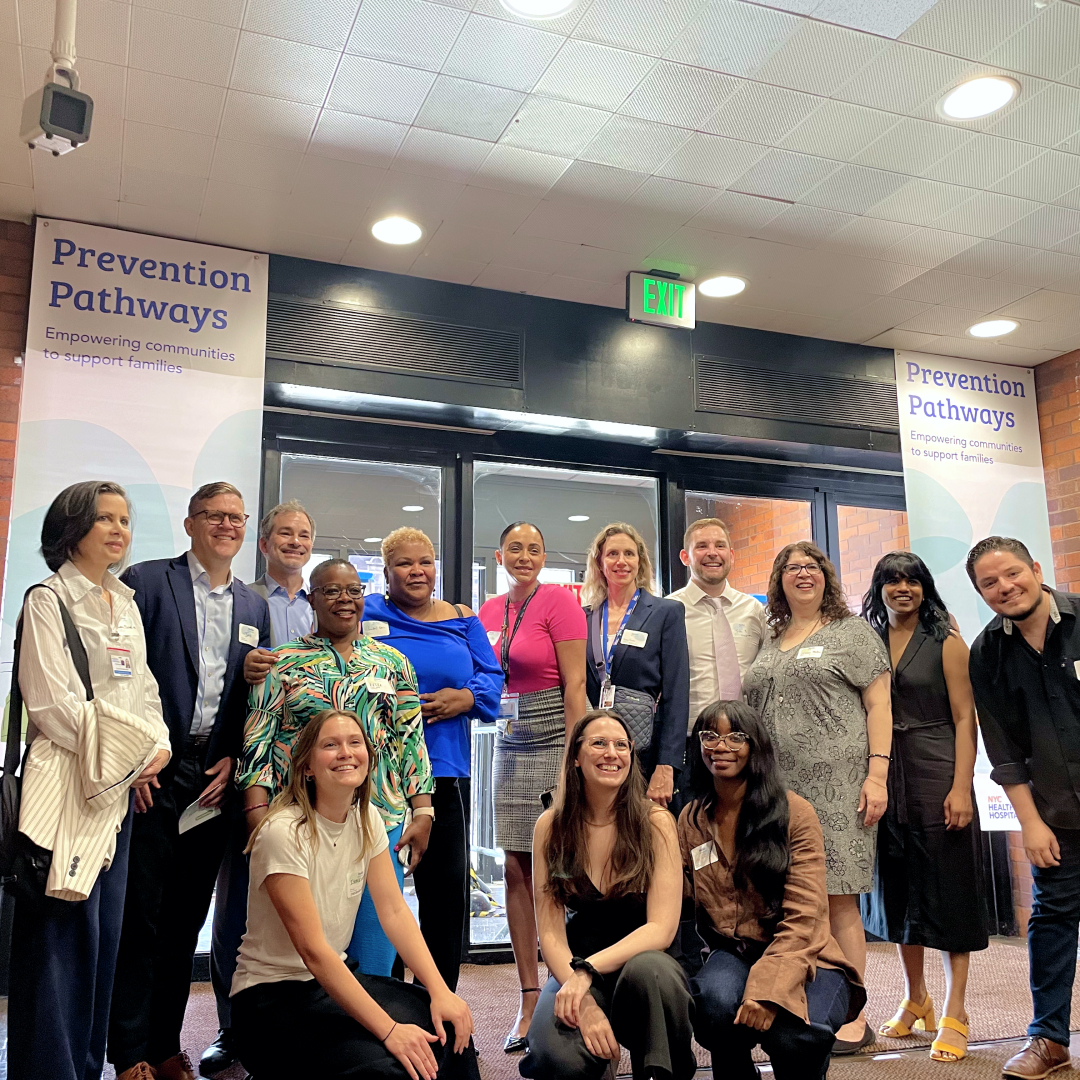
Pilot Learnings
Over four months, H+H staff deepened their understanding of Family Support programs, using the Family Support Training Tools, and facilitated conversations with families about these services using the Family-Staff Interaction Tools. When it was time to make a referral, H+H staff and CBO staff used the Referral Pathways workflows to communicate more directly and expedite the referral process. Frontline staff at participating hospitals used the Referral Pathways workflow to make referrals to the local CBOs using the findhelp platform.
Throughout the pilot, the PPL team monitored referrals and checked in with frontline staff and partners to troubleshoot any challenges and gather feedback. At the end of the pilot, we conducted interviews with 31 participants, including sixteen H+H staff members, thirteen staff from the CBOs, and two families referred through the initiative. Our interviews found that H+H social workers’ knowledge about Family Support programs had increased as a result of the Family Support Training, and they found the Family-Staff Interaction Tools, like the Guide to Family Support, to be helpful resources when matching families to programs. A key goal of this project is to reduce unnecessary child maltreatment reports; we were pleased to learn that, using the new referral process, staff felt more empowered to offer families supportive services when they saw a family in need of support and a report to the Statewide Central Register of Child Abuse and Maltreatment (SCR) was not legally required.
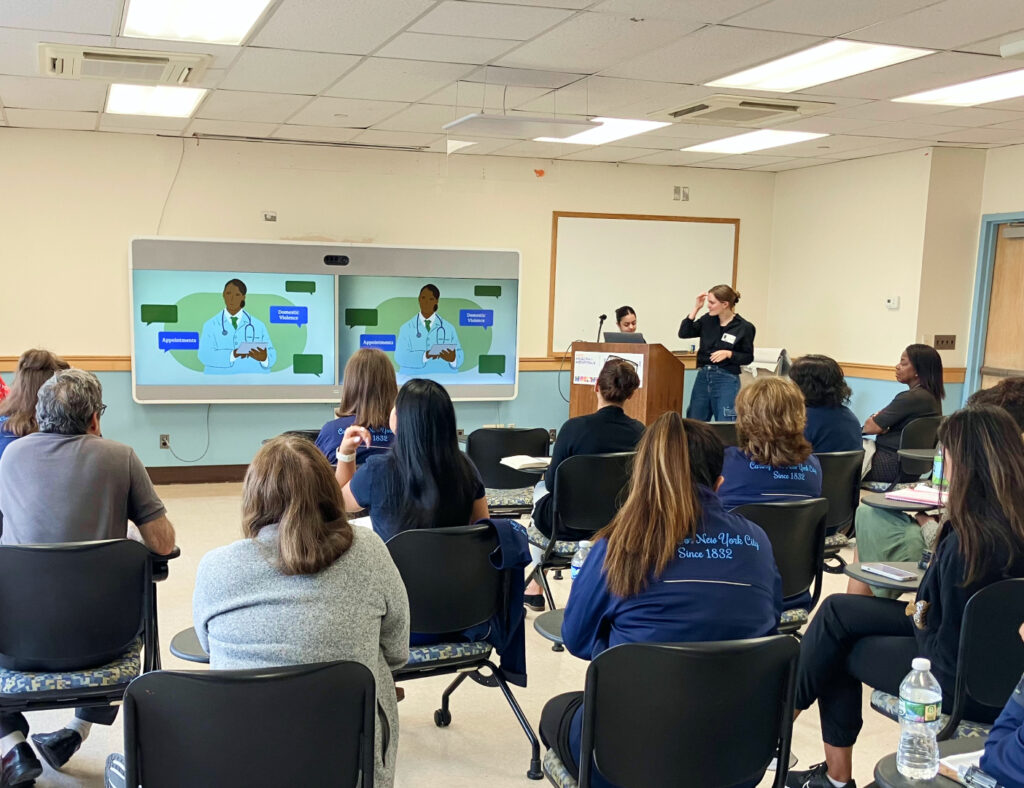
The pilot also identified some key areas to address with the materials before we scale the initiative. These include providing more technical assistance to the Family Support CBOs to troubleshoot technical issues with the findhelp referral platform, building more knowledge of the initiative among H+H medical and nursing staff, and improving the Family Support brochure so that families better understand the program before they begin the intake process.
PPL is currently incorporating these insights from the pilot, iterating on the tools with the goal of creating an even smoother referral process for both families and staff.
PPL is a tax-exempt 501(c)(3)
nonprofit organization.
info@publicpolicylab.org
+1 646 535 6535
20 Jay Street, Suite 203
Brooklyn, NY 11201
We'd love to hear more. Send us a note and we'll be in touch.
We’re always open to talking to folks with the skills, experience, and passion to join our team. Share your interest with us through our general application.
To hear about future job announcements, follow us on Instagram, Twitter, and LinkedIn or subscribe to our newsletter.
Enter your email below to subscribe to our occasional newsletter.
Wondering what you’ve missed?
Check out our
The Public Policy Lab is a tax-exempt
501(c)(3) nonprofit organization.
Donate now to support our work; your
gift is tax-deductible as allowed by law.